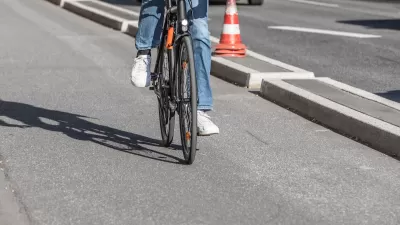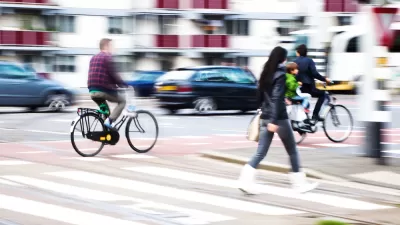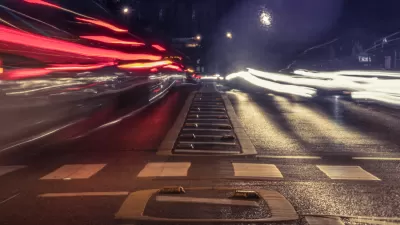The New York Times goes over the debate over whether it is acceptable to let children walk to school nowadays. The topic has many parents expressing mixed feelings about the issue.
As The New York Times reports about a young girl who is the only student who walks a block and a half to her school, many issues have come up in the debate. Is the world indeed less safe? How has design and suburban sprawl influenced where kids can walk to?
When to detach the parental leash? The trip to and from school has become emblematic of the conflict parents feel between teaching children autonomy and keeping them safe. In parenting blogs and books, the school-bus stop itself is shorthand for the turmoil of contemporary parents over when to relinquish control.
In 1969, 41 percent of children either walked or biked to school; by 2001, only 13 percent still did, according to data from the National Household Travel Survey. In many low-income neighborhoods, children have no choice but to walk. During the same period, children either being driven or driving themselves to school rose to 55 percent from 20 percent. Experts say the transition has not only contributed to the rise in pollution, traffic congestion and childhood obesity, but has also hampered children's ability to navigate the world.
FULL STORY: Why Can’t She Walk to School?

Planetizen Federal Action Tracker
A weekly monitor of how Trump’s orders and actions are impacting planners and planning in America.

Map: Where Senate Republicans Want to Sell Your Public Lands
For public land advocates, the Senate Republicans’ proposal to sell millions of acres of public land in the West is “the biggest fight of their careers.”

Restaurant Patios Were a Pandemic Win — Why Were They so Hard to Keep?
Social distancing requirements and changes in travel patterns prompted cities to pilot new uses for street and sidewalk space. Then it got complicated.

Platform Pilsner: Vancouver Transit Agency Releases... a Beer?
TransLink will receive a portion of every sale of the four-pack.

Toronto Weighs Cheaper Transit, Parking Hikes for Major Events
Special event rates would take effect during large festivals, sports games and concerts to ‘discourage driving, manage congestion and free up space for transit.”

Berlin to Consider Car-Free Zone Larger Than Manhattan
The area bound by the 22-mile Ringbahn would still allow 12 uses of a private automobile per year per person, and several other exemptions.
Urban Design for Planners 1: Software Tools
This six-course series explores essential urban design concepts using open source software and equips planners with the tools they need to participate fully in the urban design process.
Planning for Universal Design
Learn the tools for implementing Universal Design in planning regulations.
Heyer Gruel & Associates PA
JM Goldson LLC
Custer County Colorado
City of Camden Redevelopment Agency
City of Astoria
Transportation Research & Education Center (TREC) at Portland State University
Camden Redevelopment Agency
City of Claremont
Municipality of Princeton (NJ)





























